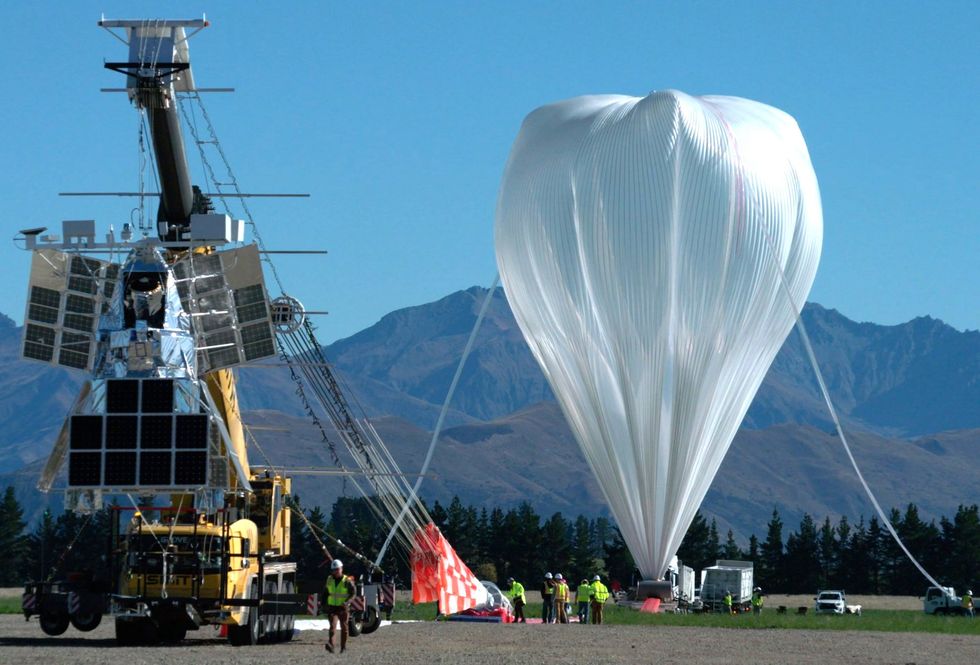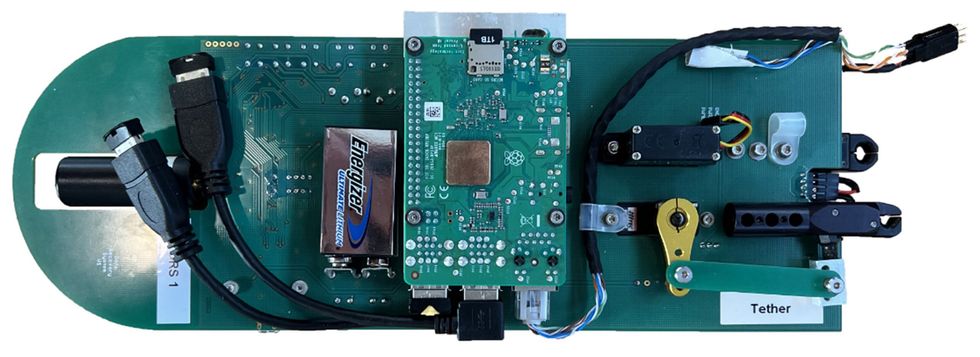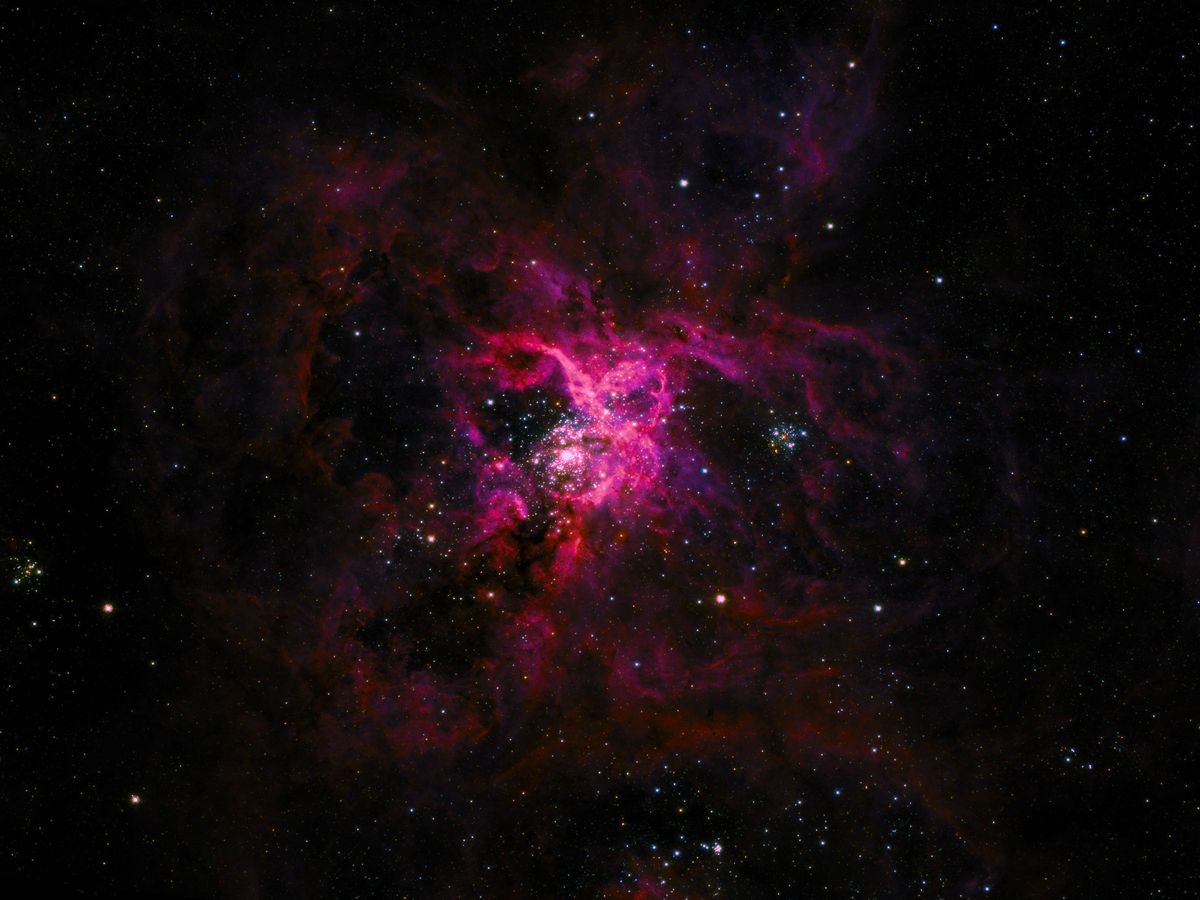A NASA high-altitude balloon flight earlier this year served as reminder of an ever-important lesson: Always back up your data.
In April in Wānaka, New Zealand, researchers launched the Super Pressure Balloon Imaging Telescope, or SuperBIT, a balloon-based telescope that aimed to gather data on dark-matter distribution by imaging colliding galaxies. SuperBIT floated at the edge of the atmosphere for 40 days collecting data before it returned to Earth. Upon landing, however, the balloon was significantly damaged. What saved the day was two data recovery systems (whose specs the researchers recently published) that earlier in the day had already parachuted down to the Patagonia region of Argentina, rescuing more than 200 gigabytes of SuperBIT observations.
“It’s like streaming Netflix down from the edge of space.”
—Richard Massey, Durham University, England
“For all of the elements on the periodic table, there’s about six times as much dark matter,” says Richard Massey, a professor of physics at Durham University in England. Dark matter’s only effects on visible matter, famously, can only be observed indirectly through gravitational effects. “It’s a bit like studying the wind,” Massey explains. “You can’t see the wind if you look outside, but you can see leaves blowing around.”

SuperBIT has trained its focus on galaxy clusters, where hundreds to thousands of galaxies bunch together, sometimes colliding. “We’re using SuperBIT to map where the bits fly, so we can hopefully figure out what this invisible stuff is,” Massey says.
Ground-based telescopes don’t have the resolution the researchers needed to perform these observations, and existing space telescopes—which achieve much higher resolution by avoiding scattering from the atmosphere—use either too narrow or too wide a field of view. Dangling a telescope from a balloon more than 30 kilometers up offered an ideal solution, achieving nearly the same resolution as a space telescope at a fraction of the cost. “It sounds a little bit crazy, but it works remarkably well,” says Ellen Sirks, a research associate at the University of Sydney. She began working on SuperBIT as a doctoral student of Massey.
While telescopes like Hubble and the James Webb Space Telescope cost billions of dollars, balloon telescopes can be launched “at a university budget,” Sirks says.
Raspberry Pi by Parachute
Balloon-based telescopes present challenges too, such as reliable data retrieval. Generally, these telescopes beam down data to ground stations or nearby satellites. SuperBIT did so with SpaceX’s Starlink satellites, but the telescope gathered too much data to be transmitted continuously for the entire flight.
“It’s like streaming Netflix down from the edge of space,” says Massey. Without a stable connection, that “streaming” was interrupted several times during the flight and lost about two weeks into the mission. Luckily, the team had devised a physical backup system, supplementing the satellite connection and the telescope’s primary hard drives. The data were copied onto the data-recovery system and dropped from the sky.
“It sort of hearkens back to the 1960s and spy satellites,” Massey says. Instead of scientific data on SD cards, those satellites dropped surveillance footage in film cassettes.
The data-retrieval system consists of parts that are “relatively commonplace,” Sirks says. For the electronics, it uses a Raspberry Pi compact computer along with an SD card with 5 terabytes of storage. The storage device is connected to the telescope’s onboard computer via Ethernet to continuously transfer the data, and it is attached to the telescope with mechanical pincers used by professional archers and chosen because of their ability to withstand high tension. “Sometimes, the simplest things are the best solutions,” Sirk says.

When the astronomers are ready to release the system, they send a message to the Raspberry Pi to begin the process. Thirty seconds later, it slides off the telescope and begins the descent. A parachute opens to slow the fall, and the Pi glides down to Earth.
Because the balloon-based approach is less expensive than launching a telescope into orbit, the researchers were able to iterate the design and improve their data-recovery system. So, while the basic design has been consistent over the data-recovery system’s development, some of the details have changed.
For example, on a 2019 test flight of SuperBIT and its data recovery, Massey and Sirks were surprised to find that the Raspberry Pi was overheating—despite the frigid environment. In the upper atmosphere, Massey explains, “it’s -60 degrees [Celsius], but electronics just tend to overheat and cut out.” The culprit was soon discovered: Fans are usually used to cool down these computers, but at that altitude, there is hardly any air to transport the heat. In the updated version of the system, the researchers added a radiator system with a copper tube linking the computer to the surrounding environment. That way, the computer could emit heat out into space and keep the system cool.
The data-recovery system is also a good solution for flights—like SuperBIT’s—that spend a long time over bodies of water, says Andrew Hamilton, the acting chief of NASA’s Balloon Program. In these flights, there is a greater chance of losing the telescope in the ocean, so they can’t rely on onboard hard drives. However, Hamilton says, the retrieval itself presents challenges: First, you have to get permission from the local air traffic authority to drop the data capsules. Then, the researchers have to find where the capsules have landed.
Before dropping two capsules carrying separate copies of the data, the SuperBIT team coordinated with the Argentine police, who Massey and Sirks say were a crucial part of the retrieval. The capsules landed in a remote area with rough terrain, and the researchers knew only the approximate locations; Sirks had developed software to calculate the landing site based on weather conditions, but strong crosswinds over the Andes and a faulty battery meant they couldn’t track the landing craft precisely.
One of the data-recovery systems was also “inspected by the local wildlife” upon its landing, Massey says. A cougar found the device and dragged it away from the initial site. Luckily, the system wasn’t damaged badly, and the data was safe.
SuperBIT’s flight earlier this year, Hamilton says, was the first time that the NASA Balloon Program had used this type of data-recovery system. Now, Hamilton says NASA is looking into other methods of performing “data drops,” through programs including the FLOATing DRAGON Challenge, a competition is seeking prototypes of similar devices from university students.
Sirks and Massey also plan to improve their design for future telescopes by fixing the problem they had with the system’s battery during its descent. And, to keep the system safe from wildlife after landing, Massey has an idea:
“Next time,” he says, ”I guess we’ll have to put something that smells a bit bad onto it.”
Gwendolyn Rak is an assistant editor at IEEE Spectrum covering consumer electronics and careers. She holds a master’s degree in science journalism from New York University and a bachelor’s degree in astrophysics and history from Swarthmore College.



